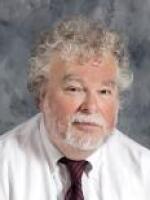The proposal to turn an old and long-closed elevated railroad line into an elongated park and urban connector drew a packed house Tuesday night at Buffalo's Saturn Club.

This project and many others around the country are trying to emulate the success of Manhattan's High Line, an old and closed rail line that brought freight to Lower Manhattan and sat as an eyesore for decades -- an eyesore until people decided it could be an asset as an attraction, walkway and urban symbol.
With many similar rail lines around the country, like the DL&W line in downtown Buffalo, that has become a guide to what can be done. The rail line has been sitting idle for decades and is overgrown with trees and vegetation, while the bridges that once tied it all together are long gone.
The DL&W could tie together Canalside, the Cobblestone District, Perry and the Old First Ward -- many neighborhoods of varying demographics -- and the crowd Tuesday night was interested.
University at Buffalo Architecture and Planning Dean Bob Shibley said it would be distinctive.
"Anytime you have elevation, you have view. That's view to and view from, and that changes the dynamic of your relationship with place," Shibley said. "There's nostalgia about it, but you gotta get past that to really actively programming the space and that's kind of what I'm looking forward to learning about. It's one thing to make it special, it's another thing to activate it with people in it."

Consultant Anthony Armstrong said there appears to be massive support.
"We've had surveys back from almost 500 people. We've spoken to hundreds of people in community meetings and at open houses. Here, tonight, we will have a couple hundred more. The response has been overwhelmingly positive," Armstrong said. "From our surveys, we have over 90 percent, reaching 95 percent, people who want to see this happen, who want to have a place where they can connect with nature close to downtown, where they can connect with others in a new positive public space."
Now, supporters have to turn that enthusiasm into a plan -- and raise money to pay for it. Jarrett Coppin said all segments of the community should be involved in the planning.
"There should be a Buffalo voice in planning it, because this is a community that's comprised of multiple different races and ethnicities," Coppin said. "So I think that everybody should have a voice in the planning and implementation of the project."
The Niagara Frontier Transportation Authority actually owns the land and is deciding what to do with its yards and shops complex. Other uncertainties range from whether to replace demolished bridges to how much it will cost to remediate the anticipated environmental problems of what was a rail line for a half-century.










